Better Studio
In 2025, artificial intelligence is redefining how we shop for and visualize clothing. This guide explores the latest advancements in AI-powered clothing visualization, from virtual try-ons to cutting-edge tools that allow seamless outfit changes in photos and videos.
Understanding Virtual Clothing Technology: How AI is Transforming Fashion
The fashion industry continues to experience a digital transformation, with AI-driven clothing visualization leading the way. Modern tools leverage advanced machine learning algorithms to create realistic clothing simulations, taking into account fabric behavior, lighting effects, and personal body measurements.
What makes today’s AI clothing visualization so powerful is its ability to:
Accurately analyze body shape and proportions
Simulate realistic fabric movement and texture
Adjust lighting and shadows for authenticity
Generate high-resolution images that look indistinguishable from real photos
Virtual Try-On Technology: Revolutionizing Online Shopping
Virtual try-on solutions have become a game-changer for e-commerce, eliminating one of online shopping’s biggest hurdles—the inability to try clothes before purchasing. These tools allow shoppers to:
Visualize how garments fit their body type
Experiment with different sizes and styles
Compare outfits instantly
Make more informed buying decisions
Retailers utilizing AI-powered try-ons report significant benefits, including:
A reduction in return rates by up to 40%
Increased customer confidence and satisfaction
Higher conversion rates for online purchases
Enhanced user engagement and shopping experiences
How AI Clothing Visualizers Work: A Complete Overview
AI clothing visualizers integrate multiple cutting-edge technologies to create seamless virtual try-on experiences. The process includes:
Image Processing
Body detection and pose estimation
Clothing segmentation
Fabric recognition
3D Modeling & Simulation
Personalized avatar creation
Garment digitization
Realistic physics-based fabric movement
Rendering & Visualization
High-resolution texture mapping
Realistic lighting and shadow effects
AI-driven image refinement
These systems operate in real time, allowing users to see instant results as they explore different clothing options.
Free vs Premium: AI Clothing Visualization Options
AI-powered clothing visualization tools are available in both free and premium versions:
Free Options:
Basic try-on and outfit change features
Limited clothing libraries
Standard resolution outputs
Community support
Premium Features:
Advanced 3D garment modeling
AI-assisted styling recommendations
Custom measurements and size predictions
High-resolution image exports
API access for integration
Commercial usage rights
Step-by-Step Guide: Using AI to Change Clothes in Photos
Follow these steps to maximize AI clothing visualization tools:
Prepare Your Image
Choose a well-lit, high-quality photo
Ensure a neutral pose for optimal detection
Remove unnecessary background distractions
Select an AI Tool
Evaluate features based on your needs
Check device compatibility
Review pricing options if applicable
Upload and Process
Follow platform-specific instructions
Let AI analyze and segment the image
Review automatic adjustments
Refine the Results
Adjust fit, position, and color if needed
Modify lighting and texture for realism
Experiment with style combinations
Export and Save
Choose preferred resolution and format
Save multiple versions for comparison
Share on social media or integrate into e-commerce platforms
AI Clothing Color Change Technology: Transform Outfits Instantly
AI-powered color transformation tools enable users to experiment with different styles and aesthetics by modifying garment colors without affecting texture or fabric details. Key features include:
Precise color matching
Seamless pattern preservation
Real-time shade adjustments
Enhanced shadow and reflection accuracy
This functionality is widely used for:
Testing seasonal color trends
Customizing outfits for branding purposes
Visualizing different color options before production
Virtual Fitting Rooms: The Future of Retail
Retailers are rapidly adopting AI-driven virtual fitting room technology to enhance customer experience. Key benefits include:
AI-powered size recommendations
Mobile and web-based virtual try-ons
In-store digital mirrors for hybrid shopping experiences
Integration with social media for sharing outfit choices
The Technical Side: How AI Clothing Visualization Works
The backbone of AI clothing visualization relies on advanced technologies such as:
Core Technologies:
Deep learning and neural networks
Computer vision algorithms
3D rendering engines
Physics-based simulation models
Key Components:
Pose estimation and body segmentation
Texture and fabric mapping
AI-assisted lighting and shading calculations
Future Trends: What’s Next for AI Fashion Technology?
As AI continues to advance, several emerging trends are shaping the future of digital fashion:
Upcoming Innovations:
Real-time motion simulation – Try on clothes dynamically in live video feeds
Enhanced accessibility – More inclusive options for different body types
Better mobile integration – AI-powered styling apps with instant results
Expanded customization – Personalized clothing recommendations based on AI-driven insights
Predictions suggest broader adoption across fashion brands, improved accuracy, and deeper integration into social media and e-commerce.
Practical Applications: Who Benefits from AI Clothing Visualization?
AI-powered clothing visualization tools have diverse applications across industries:
Professional Use:
Fashion design and prototyping – Test designs digitally before production
E-commerce visualization – Improve online product displays
Virtual fashion shows – Showcase new collections in immersive digital formats
Digital marketing – Create engaging promotional content
Personal Use:
Wardrobe planning – Experiment with outfit combinations
Online shopping assistance – Make informed purchase decisions
Social media content creation – Enhance digital styling and influencer branding
Conclusion
AI clothing visualization is redefining fashion in 2025, offering new levels of customization, convenience, and creativity. As these tools become more sophisticated, they will continue to transform online shopping, fashion design, and personal styling. Whether for professional or personal use, leveraging AI-driven clothing technology opens up a world of possibilities for fashion enthusiasts and businesses alike.

